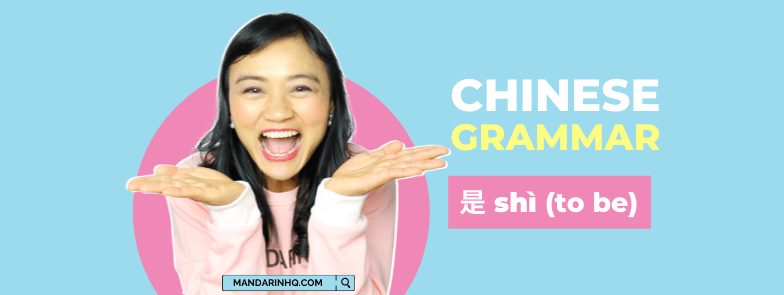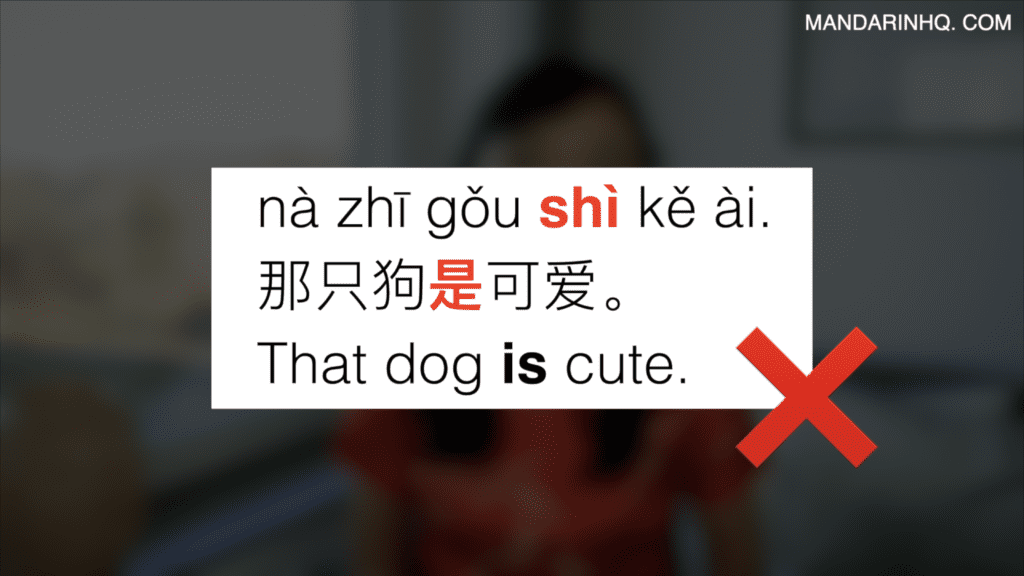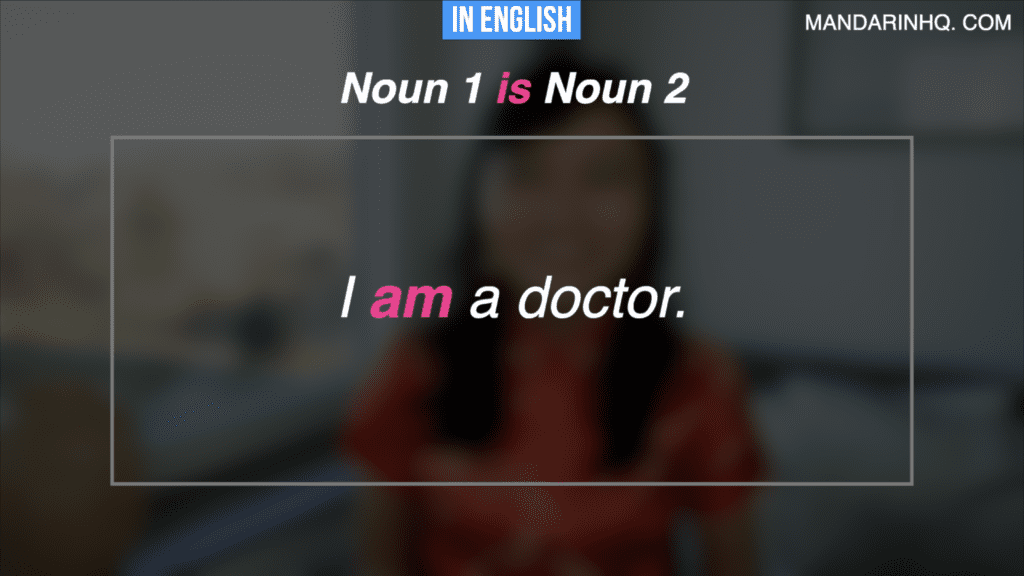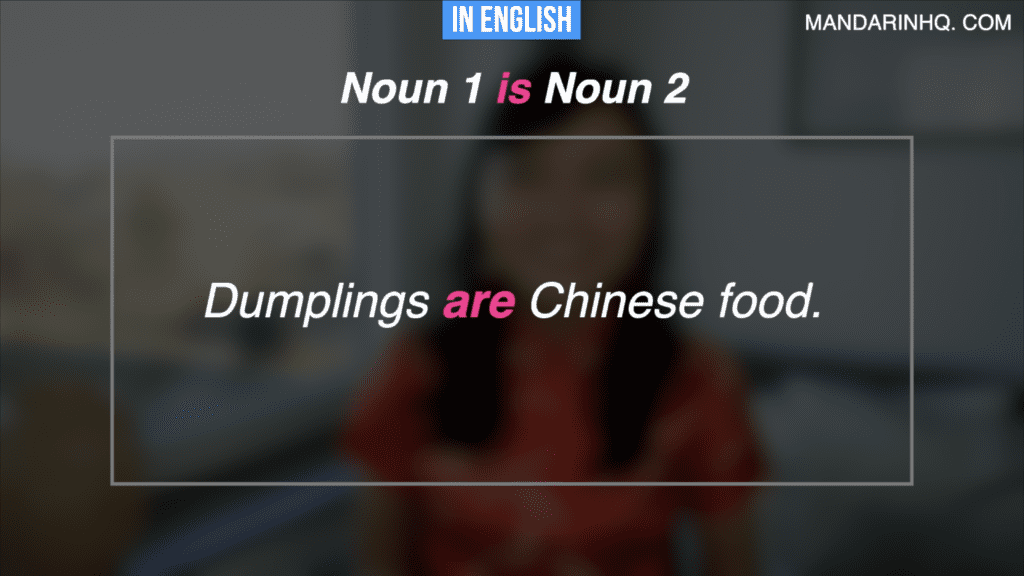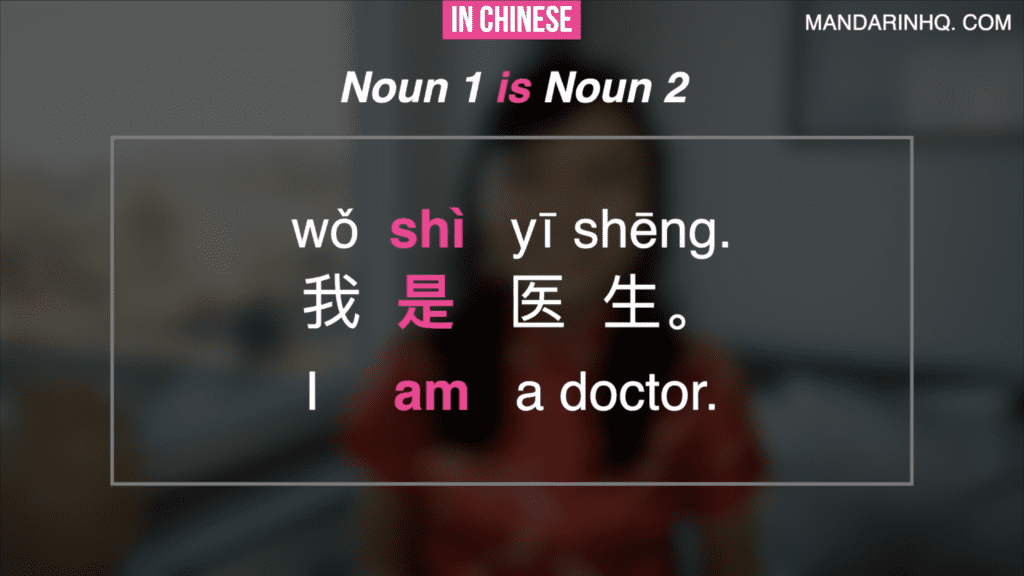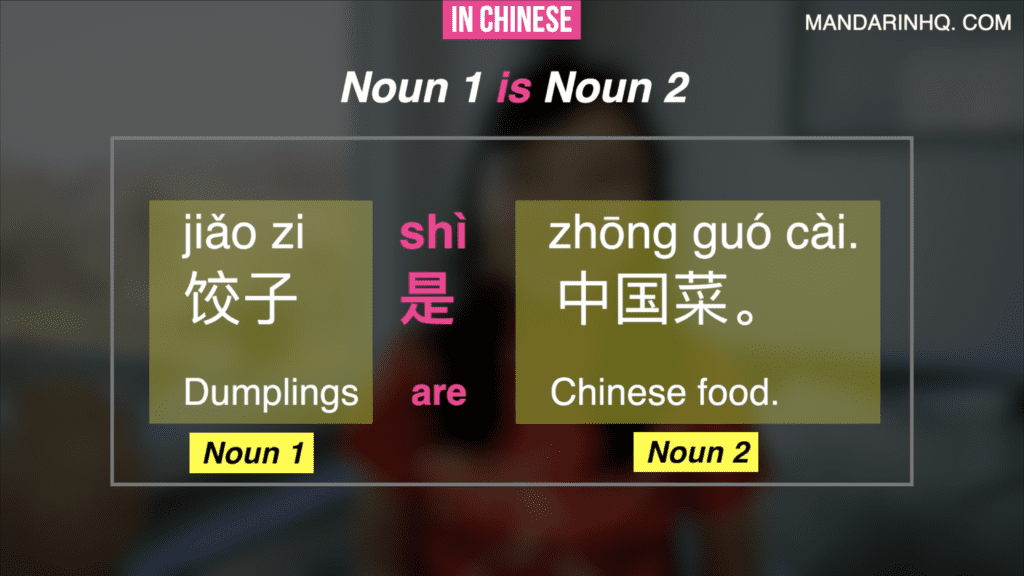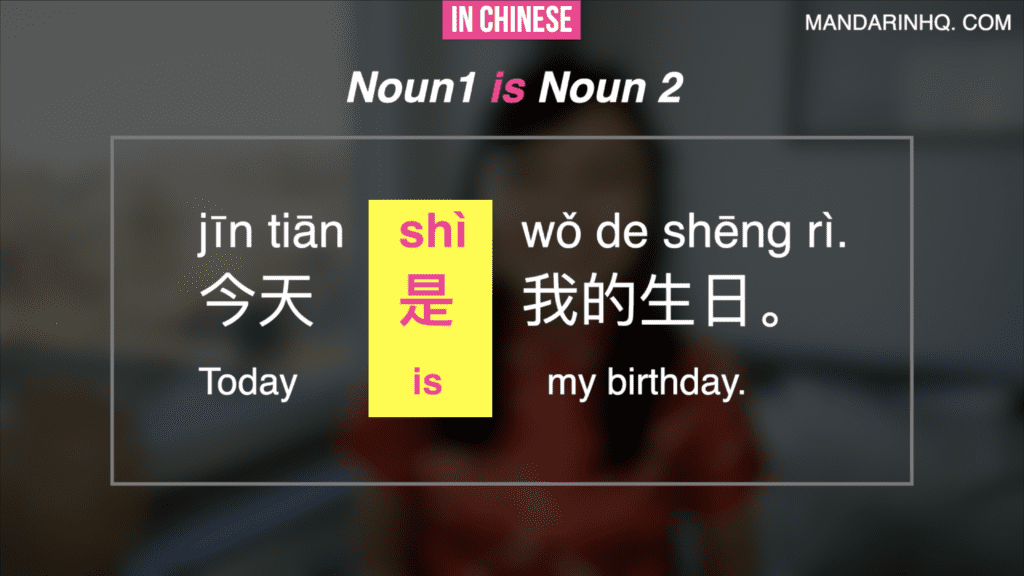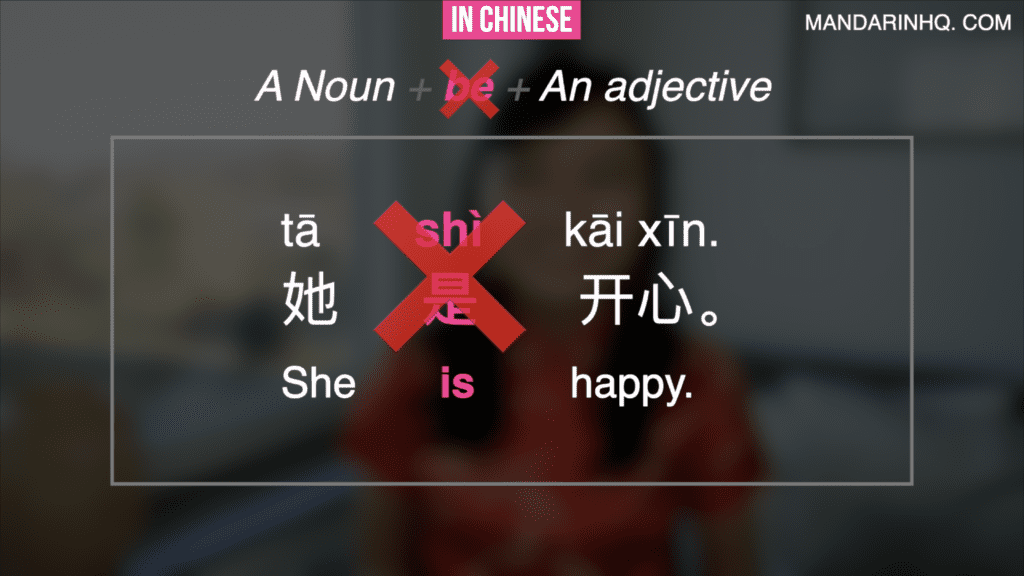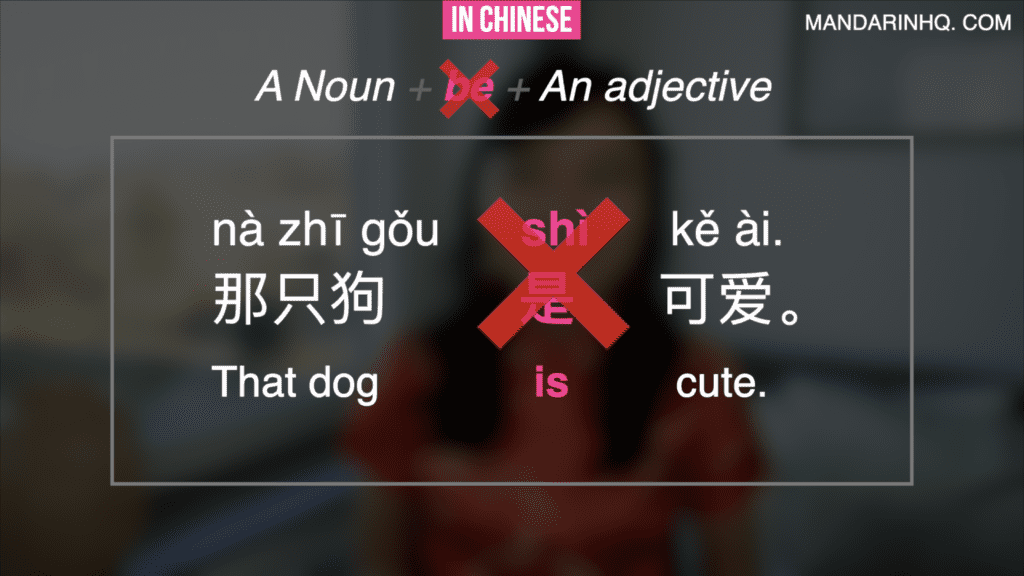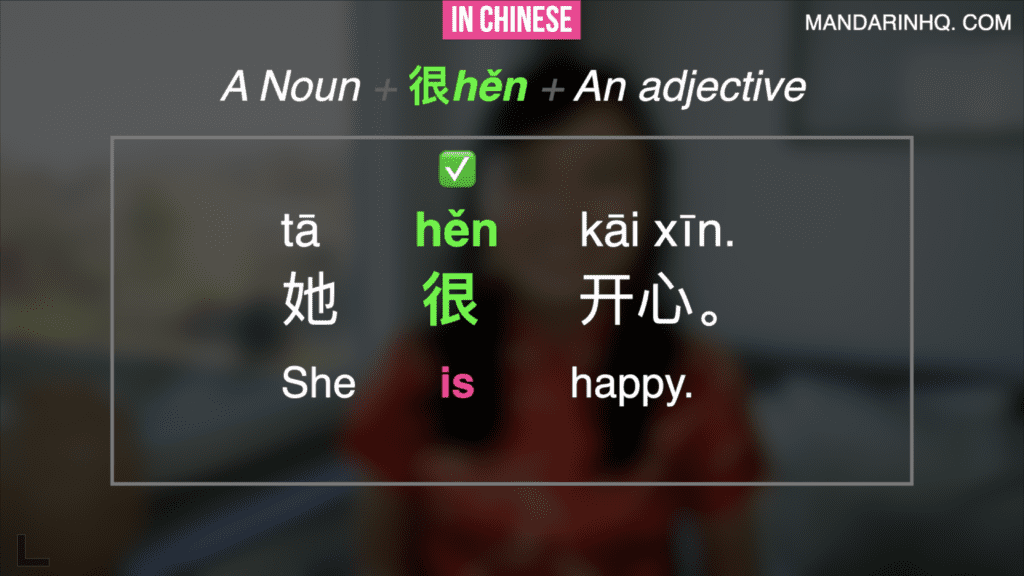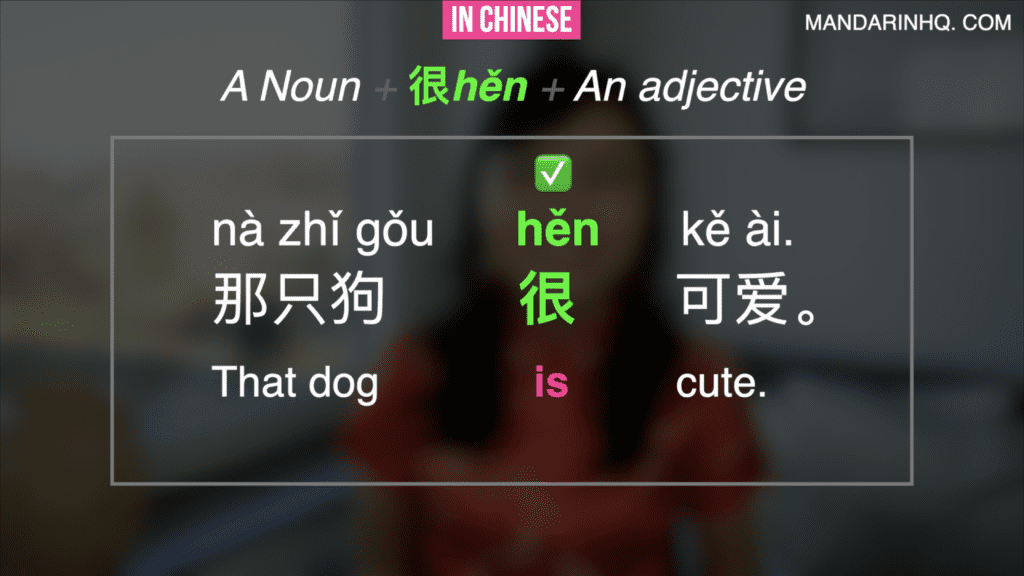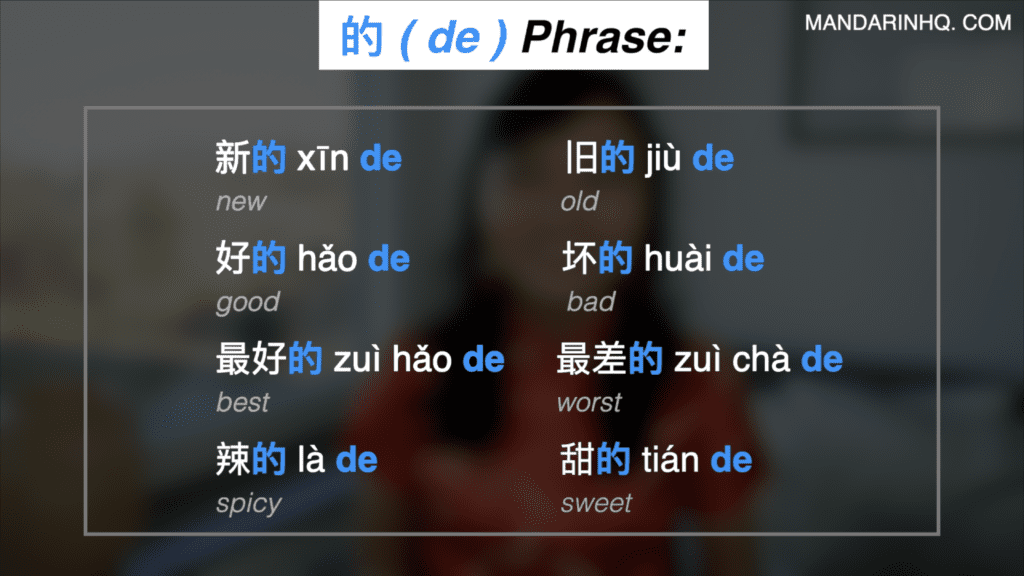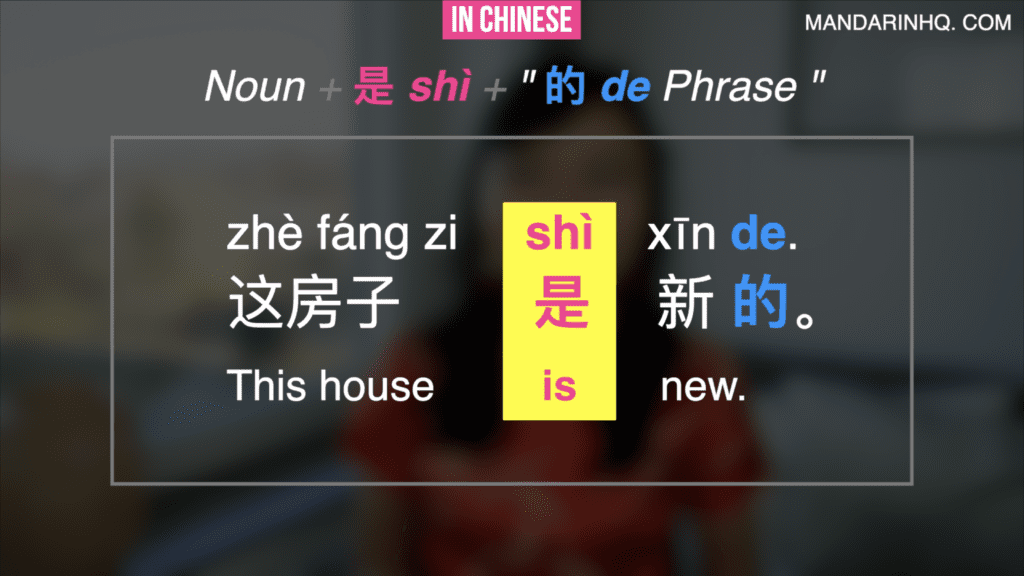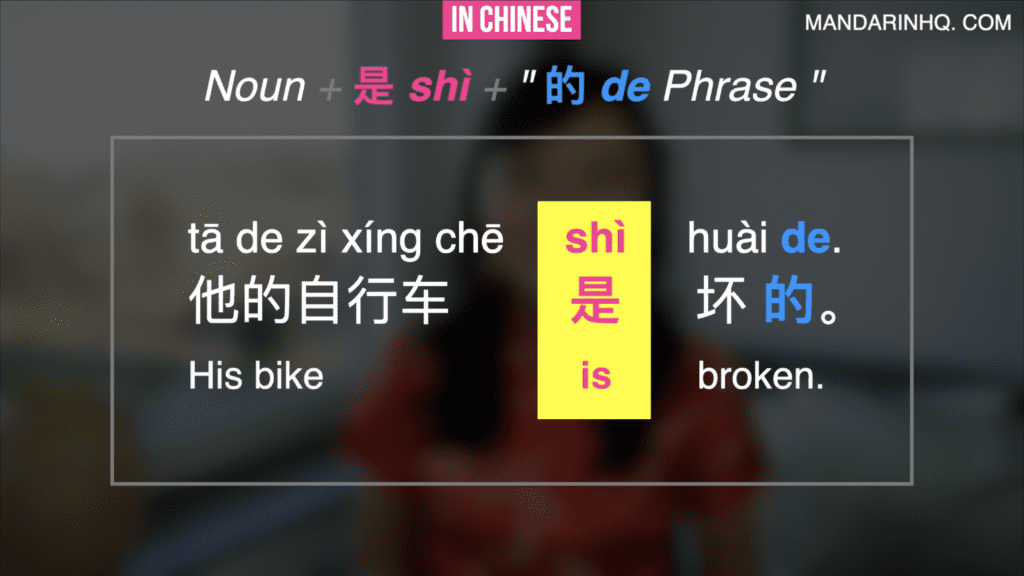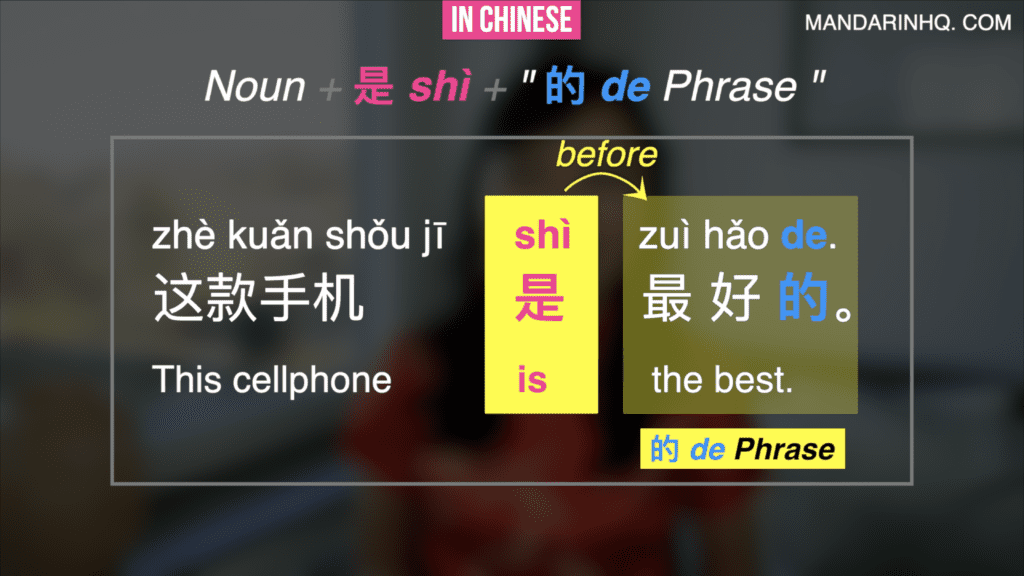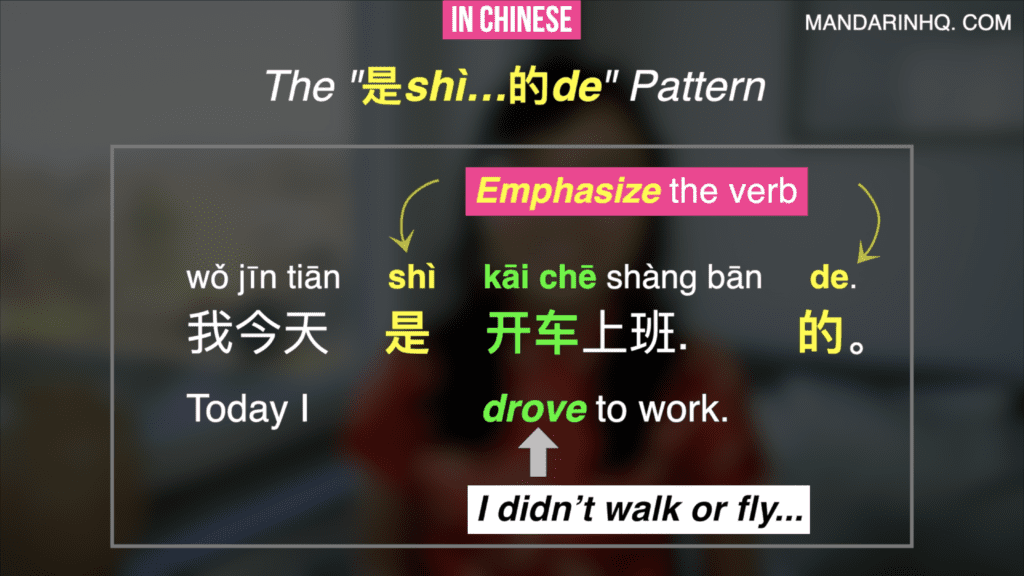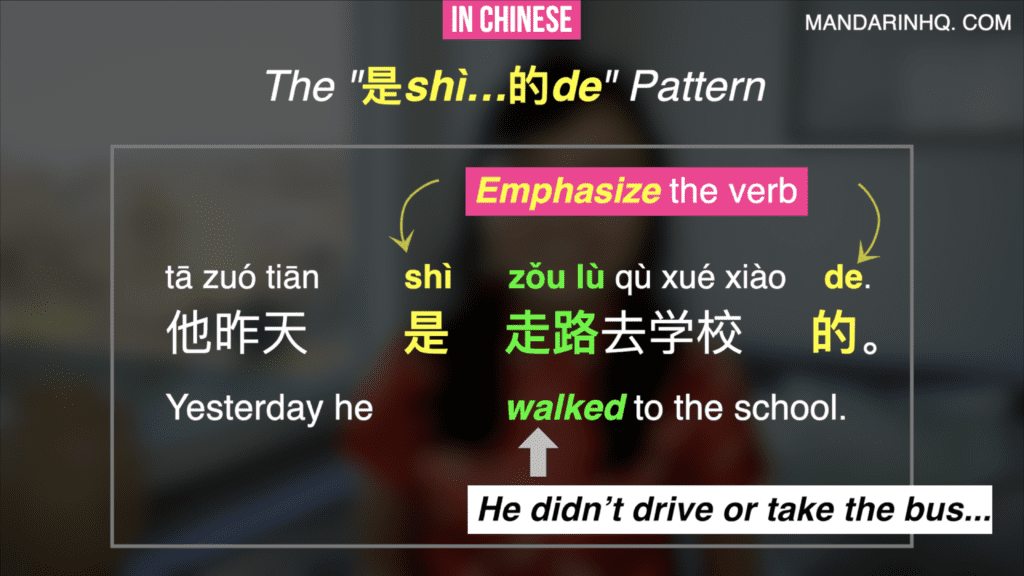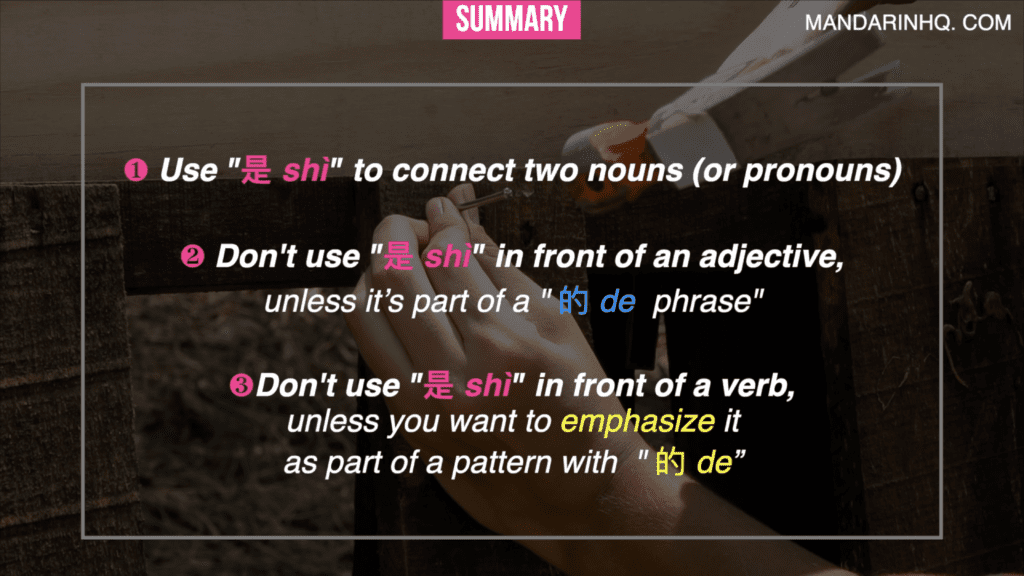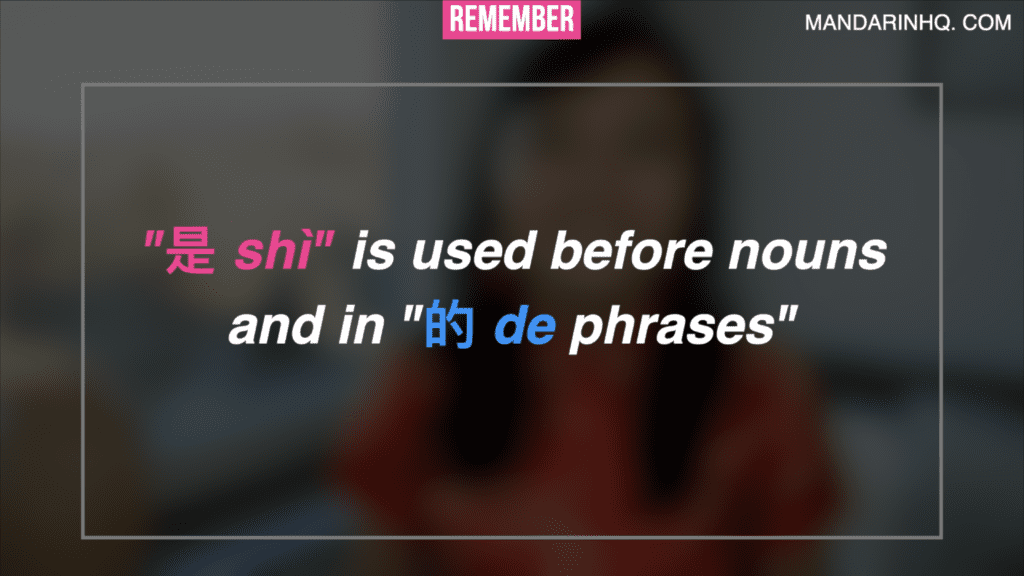是 shì (to be) is one of the Chinese verbs that learners most frequently misuse.
In this video we break down the most common mistakes and show you how to avoid them!
Summary of this Chinese Grammar Lesson (是 shì)
The verb 是 (shì), “to be” is one of the most common verbs in Chinese. And It’s also common for learners to use it incorrectly...
“That dog is cute. ” is NOT translated as "nà zhǐ gǒu shì kě ài. 那只狗是可爱。" in Chinese.
So let’s nail the basics.
Rule #1: Use "是 shì" to connect two nouns (or pronouns)
In English, you use the verb be to connect two nouns.
Noun1 is Noun 2
Example 1:
I am a doctor.
Example 2:
Dumplings are Chinese food.
This works the same way in Chinese.
Example 1:
wǒ shì yī shēng.
我是医生。
I am a doctor.
"我 wǒ" is a noun (pronoun), “医生 yī shēng” is also a noun, so we use "是 shì" to connect these two words.
Example 2:
jiǎo zi shì zhōng guó cài.
饺子是中国菜。
Dumplings are Chinese food.
Both “饺子 jiǎo zi” and “中国菜 zhōng guó cài" are nouns. So we use "是 shì" to connect them.
Example 3:
jīn tiān shì wǒ de shēng rì.
今天是我的生日。
Today is my birthday.
"今天 jīn tiān" is a noun, "我的生日 wǒ de shēng rì" is a noun phrase. So we use "是 shì" to connect them.
In English, you also use the verb be to connect a noun and an adjective.
Examples:
She is happy.
That dog is cute.
In Chinese, this is different.
“She is happy.” isn’t “她是开心。tā shì kāi xīn.” in Chinese.
“That dog is cute. ” isn’t "那只狗是可爱。nà zhī gǒu shì kě ài."
In simple sentences like these we normally use the word "很 hěn" instead of "是 shì" . Like this: "她很开心。tā hěn kāi xīn." and "那只狗很可爱。nà zhī gǒu hěn kě ài”.
Note: The 很 (hěn) in this structure is often translated as "very," but it’s really just a link between the noun and the adjective. You can think of it as a substitute for the verb "to be".
Rule #2: Don't use "是 shì" in front of an adjective, unless it’s part of a " 的 de phrase"
Question: What’s a "的 (de ) phrase?
Answer: Any phrase that ends with "的 ( de ). Like:
新的 xīn de (new),旧的 jiù de (old),
好的 hǎo de (good),坏的 huài de (bad),
最好的 zuì hǎo de (best),最差的zuì chà de (worst),
辣的 là de (spicy),甜的 tián de (sweet).
In phrases like these, you do use "是 shì" before the adjective:
Example 1:
zhè fáng zi shì xīn de.
这房子是新的。
This house is new.
"新的 xīn de" is a "的 ( de ) phrase", so we use "是 shì" before "新的 xīn de".
Example 2:
tā de zì xíng chē shì huài de.
他的自行车是坏的。
His bike is broken.
The same rule applies here:
"坏的 huài de" is a "的 ( de ) phrase", so we put "是 shì" before "坏的 huài de".
Example 3:
zhè kuǎn shǒu jī shì zuì hǎo de.
这款手机是最好的。
This cellphone is the best.
In English you put the verb “be” in front of other verbs to express that you are doing something:
I am running,
She is working
But in Chinese, you don’t use the verb 是 shì here:
wǒ shì pǎo bù. 我是跑步。
tā shì gōng zuò. 她是工作。
Instead you use 在 zài. Here, the verb"在 zài" indicates an action in progress
wǒ zài pǎo bù. 我在跑步 。
tā zài gōng zuò. 他在工作。
The same goes for talking about where you are:
I am at home. “我在家。wǒ zài jiā.” (NOT wǒ shì jiā. 我是家。)
Here the verb "在 zài" means "to be at"
So as a general rule, don’t put “是 shì ”before verbs. unless you can use it to emphasize a verb as part of a pattern with “的de” pattern. (The emphasize pattern: 是......的 shì...... de)
Rule #3: Don't use "是 shì" in front of a verb, unless you want to emphasize it as part of a pattern with " 的 de”
Example 1:
wǒ jīn tiān shì kāi chē shàng bān de.
我今天是开车上班的。
Today I drove to work. (I didn’t walk or fly...)
tā zuó tiān shì zǒu lù qù xué xiào de.
他昨天是走路去学校的。
Yesterday he walked to the school.(He didn't drive or take the bus...)

